Getting your hands dirty may sometimes be the only way to drive lasting and sustainable change. That was quite literally the case with Future Architectural Glass.
The multinational conglomerate achieved its first major sustainability goal with a sewage treatment plant at its UAE facility. From the outset, the project clocked several circular economy gains. It delivered treated water for irrigation, reduced the amount of water being purchased from the local utility by 25 per cent, and helped green the campus.
The plant, which was operational by the second half of 2021, diverted sewage from staff accommodation for about 200 workers, says Firoz Kachwala, Director at Future Architectural Glass. “The project generated 5,000 gallons of water per day. Together with the reduction in water from the utility, we were able to save 1.65 million gallons of water in 2021,” he says.
In addition, says Maintenance Manager Ram Prakash, the treated water is being diverted to a farm for organic fruit and vegetables, while creating better living space for company staff. He says, “Certainly, there were challenges such as licensing formalities and in trying to buck convention. But we finished in time and are now reaping the fruit of our efforts.”
The sewage treatment plant was one of several recommendations from Living Business, a programme that helps businesses transition to more sustainable operations. The programme is organised in collaboration with HSBC bank.
Future Architectural Glass is part of a 45-year-old group of companies with offices and manufacturing bases in the UAE, India, Singapore and the UK. The company specialises in architectural glass for building facades and internal glazing requirements, covering the whole spectrum of life and fire-safety products as well as creating bespoke solutions for architects. Its products are exported to more than 30 countries.
“Our focus has been to incorporate sustainable manufacturing practices across our ecosystem. We have taken a two-pronged approach: reduce the use of natural resources and generate natural resources by incorporating efficient processes and machinery,” Kachwala says. Our resolve to achieve these goals – and with them, a lower carbon footprint – has been strengthened with the encouragement and support of the HSBC and Living Business teams.”
Future Architectural Glass also achieved two other sustainability victories in 2021.
Over the first half of the year, fitting wash taps with aerators has helped reduce annual water consumption by 90 per cent, saving nine gallons per person per day.
In addition, the company swapped their energy-inefficient window air conditioners (ACs) for 43 high energy-efficient split AC units. The upgrade cuts electrical energy by 53 per cent for each unit, Prakash says, while cutting annual energy bills by 2 per cent. The exercise will deliver a return on investment (ROI) within five years.
Strategy for sustainability
For this article, the team shared what they learnt from their sustainability journey so far. Ram Prakash frames these lessons as actionable takeaways:
1. Incorporate science-based metrics across the production process to determine the scope of improvement.
2. Collaborate with experts and stakeholders – internal and external – to generate ideas and frame an action plan.
3. Share target initiatives and successes with others in the industry to increase mutual benefits.
4. Redesign and reimagine current business models to incorporate the circular economy.
5. Improve employee awareness and help them build the skills needed to attain your sustainability goals.
6. Set interim targets to meet the ultimate goal of net-zero operations.
Now Kachwala and his team are looking ahead to similar victories in 2022. “Last year, we focused on water conservation and in 2022 we are aiming to conserve electrical energy,” he says. Gains from the split AC units could reduce electricity use by up to 53 per cent, he adds. The company has also reached out to equipment manufacturers to replace electrical furnaces at its plants with the latest energy-efficient heaters, with estimated energy savings of 3.9 per cent.
As businesses grow, Prakash says, they gradually draw on greater environmental resources – and must likewise focus on giving back to the planet.
“With growing production volumes, our consumption also increased, which has a strong impact on the environment. But we need to protect the planet in the same way we work to grow our business,” Prakash says. In his view, prioritising the circular economy is the only way to achieve our common goals of sustainable business and social development and net-zero carbon emissions.
Future Architectural Glass will continue to work with Living Business. “The Living Business programme has become part of our strategy and has helped us become a more responsible manufacturer of architectural glass products, besides giving us great recognition within the industry,” Prakash says.
Supermarket Spinneys has become the first retailer to partner with the ‘Food for Life’ programme, a UAE initiative to drive nationwide transformation towards healthier diets from sustainable food systems.
Led by the Ministry of Climate Change and Environment (MOCCAE) and the Ministry of Health and Prevention (MoHAP), in collaboration with Emirates Nature-WWF and the Food and Agriculture Organisation of the United Nations (FAO), the initiative supports the UAE’s goal to halve food waste by 2030 in line with the National Food Security Strategy 2051 as the country works towards becoming a global leader in sustainable food systems.
Bringing to light the role food plays in our lives and the environmental impact when it’s wasted, ‘Food for Life’ aims to mobilise stakeholders across the food ecosystem to help individuals change their daily actions toward a more sustainable lifestyle and save one-third of waste by shopping, cooking and eating smarter.
Biodiversity loss
Mariam bint Mohammed Almheiri, Minister of Climate Change and Environment, said: “The global food system is the single biggest contributor to biodiversity loss, deforestation, drought, freshwater pollution and the collapse of aquatic wildlife. It’s also the second-biggest generator of greenhouse gas emissions, contributing significantly to climate change. In addition, one-third of edible food produced globally is wasted.
“With all that in mind, we see the urgency of making smarter choices around food. This is why ‘Food for Life’ seeks to educate consumers to truly appreciate food and prevent it from going into the bin. Community engagement is by far the best tool at our disposal in our quest to reduce food waste. We thank Spinneys for joining the campaign and for its steadfast commitment to sustainability.”
Committed to reducing its impact on the environment for a more sustainable future for all, Spinneys has also undertaken to halve its food waste by 2030, with a promise that no food fit for human consumption goes to waste.
Consumer education campaign
As part of Spinneys’ ‘Love Food, Don’t Waste’ initiative, the retailer has introduced a consumer education campaign and food donation drive across its stores and digital channels throughout the Holy Month.
According to Dubai Carbon Centre of Excellence, food wastage in the UAE is estimated to be 3.2 million tonnes, with around 38% of the food prepared daily being wasted, most of which comes directly from the home2. This number rises to 60% during the Holy Month of Ramadan.
Helping to raise awareness about the impacts of food waste, Spinneys shoppers are being encouraged to re-use their food scraps and repurpose leftovers via easy tips and tricks to make their household food go further and last longer. The supermarket has also identified some of the top wasted foods and provided helpful guides to help communities use and store foods – like potatoes, tomatoes and apples – in different ways.
Food donation drive
To support the UAE Food Bank’s ‘1 Million Meals Saved3’ campaign, Spinneys has introduced a food donation drive across its stores and production facilities, ensuring any surplus food is redistributed to families in need this Ramadan. Spinneys is also helping the UAE Food Bank to re-purpose the high-quality off-cuts it collects daily into pre-prepared products.
Sunil Kumar, CEO at Spinneys, UAE, said: “We are honoured to partner with the ‘Food for Life’ initiative, as we work together to combat food waste by making wiser choices in our everyday lives. As part of our 2030 sustainability programme ‘Let’s Do Better Together’, Spinneys’ ‘Love Food, Don’t Waste’ campaign is a community appeal this Holy Month to think more deeply about our food choices, to make it last longer, and reach more people and fewer bins. As the majority of food waste occurs in the home, our aim is to educate our communities on the benefits of reducing food waste and how to adopt healthier, more sustainable food choices in their daily lives.”
Spinneys is also a member of a global coalition to address food waste through the 10x20x304 initiative, which brings together supply chain stakeholders to combat the global and local challenges and align with the Sustainable Development Goals. Spinneys is committed to playing its role in the journey to a sustainable future.
Source: TradeArabia News Service
The Middle East’s real estate industry is continuously evolving and the need for sustainability has become evident within the region as well as worldwide. Sustainable developments/buildings have gained popularity in recent years as the UAE government has put in place several initiatives and strategies to reduce energy consumption at an industrial and individual level.
According to the International Energy Agency, the world had its worst year for energy efficiency in a decade in 2020 as the pandemic shifted the focus of the economy away from services towards industry, the rate of improvement of global energy intensity was expected to recover to 1.9%. Global energy intensity indicates how efficiently the world’s economic activity uses energy.
The agency revealed in its Energy Efficiency 2021 report that global progress on energy efficiency recovered in 2021 to its pre-pandemic pace, but that it was less of what was needed to accomplish global net-zero emissions by 2050. The report concluded that the total annual investment in global energy efficiency needs to triple by 2030 so that the Net Zero by 2050 goal can be met.
In the UAE, due to rapid population growth, economic activity, and high consumption rates, energy efficiency is also a constant challenge. Over the last 6 years, the annual average of energy usage in the UAE has increased by 4%, with an expected increase to 5% through 2022. Energy consumption has more than doubled in the past decade, this elevated pace of growth is unsustainable over a long period.
The Dubai economy relies heavily on two sectors — tourism and real estate. These took a hit in the last two years but are back in almost full force with pandemic regulations slowly easing, on the back of stimulus packages worth Dh7.1 billion ($1.93bn).
Local sustainable outlook
The UAE has taken a structured approach to energy conservation. The UAE Energy Strategy 2050 aims to achieve an energy mix that combines renewable and clean energy sources to balance economic requirements and environmental goals. The country plans to make investments totalling Dh600 billion until mid-century to meet the rising energy demand and secure the sustainable growth of the economy. The eventual goals are to boost clean energy, reduce dependency on natural gas, cut CO2 emissions by 70% and improve energy efficiency by 40%. All this can result in Dh700 billion savings.
A study found that a 10% share of renewable energy in the total energy mix could result in annual savings of $1.9 billion by 2030. When accounting for health and environmental benefits an additional net annual savings of $1 billion to $3.7 billion by 2030 could be expected.
Along with this nationwide drive for sustainability comes the need for technologies to support it thereby creating a burgeoning segment in the real estate sector — smart buildings.
Smart buildings
Buildings account for over 30% of global energy consumption. Of all building operating expenses, energy use is the single largest, at approximately one-third of normal operating budgets and is responsible for almost 20% of the nation’s annual greenhouse gas emissions. With such a staggering footprint, real estate holds immense economic, social and environmental impact.
The UAE ranked 14th globally for the number of sustainable buildings in a survey of 373 corporate real estate professionals undertaken by Knight Frank. It was also the only country from the GCC to feature in the top 30, with 869 green-rated buildings. Dubai and Abu Dhabi are two of the top-ranking smart cities for technology in the IESE Cities in Motion Index 2020.
Amid the Covid-19 pandemic, interest in smart buildings has surged. Consumers are keen on technologies that make their life smoother while benefiting the environment such as smart cooling and lighting systems, smart elevators, app-driven maintenance and more. A report by Technavio predicts that the global smart buildings market will increase 13% in annual value, reaching $19.17 billion by 2024.
The design of a building has a significant impact on its potential to use energy efficiently throughout its life. In line with the UAE’s energy conservation goals, strict building codes have been laid out for building design and construction. Those that comply receive a Green Certificate — a stamp of approval for sustainability.
Due to the regional climate, air conditioning systems are one of the top energy consumers at around 80-85% of the total building energy consumption. While it cannot be avoided, optimizing usage is key. For example, at Lootah Real Estate Development’s Loci Residences, each apartment’s air conditioning unit detects whether a person is present in a room. It learns the movements of the occupants too. If they usually arrive at 5:30 pm, the AC will switch on at 5:20 pm so the apartment is cool without wasteful energy consumption throughout the day. Some of the other stipulations include the use of light reflective walls, smart meters and speed control escalators with traffic detection capabilities, which are all part of the plan for Loci Residences.
The future of the way we live in and use our homes is set to be one thing: smart. The stakes for the UAE and the world are high as the uptake for innovative smart technologies, energy-efficient features and other eco-conscious practices are on the rise. With the UAE chasing sustainability, consumers are demanding a greener perspective and property developers need to grab the opportunity while it is ripe.
Source: cbnme.com
UAE-based Phoenix Contact Middle East is lowering its carbon emissions in different ways, from logistical changes to the use of energy-saving and sustainable devices across its facilities
Sustainability has become a necessity for companies across the world, and businesses in the Middle East are no exception. As expectations for corporate social responsibility increase and as transparency becomes critical, more organisations are recognising the need for sustainable approaches.
But while 90 per cent of executives find sustainability to be important, only 60 per cent of companies incorporate sustainability into their strategy, according to an MIT study. This creates a gap between knowing and doing.
One company that is addressing this gap is Phoenix Contact, a global market leader and innovator for electrification, networking, and automation. . Phoenix Contact has made appreciable strides over the years to reduce its carbon footprint and improve its sustainability efforts.
Phoenix Contact Middle East reduced its greenhouse gas footprint by 50 per cent in 2021. With support from the Target Climate Initiative by Emirates Nature, a non-profit organization that combats climate change in the UAE, the company conducted a greenhouse inventory from 2018 to 2020. As a result, it took concrete steps to lower its carbon emissions by switching to sea freight, reducing air travel, and using energy-saving and sustainable devices across all its facilities, such as LED lighting and chilled water from district cooling plants at its facilities in the UAE.
Phoenix Contact Middle East was therefore able to cut emissions by 28 per cent in 2020 and 26 per cent in 2021, with a total reduction of almost 50 per cent compared to previous years.
Overall, the Phoenix Contact group aims to realize climate neutrality across its entire value-added chain by 2030.
“The framework for sustainable management and corporate responsibility is formed by the harmonisation of economic, ecological, and social issues,” said Iyad Madanat, General Manager at Phoenix Contact Middle East. “As part of maintaining a sustainable business, we meet the relevant environmental protection standards and regulations and support our employees and the regions where we work. We focus on sustainable value creation – from development through manufacturing to logistics.”
The company wants to extend those gains in line with its vision of Empowering the All Electric Society. The concept depicts a world where renewable energies become the primary source of energy around the world, for both sustainability and economic benefits. Global demand for power is expected to double by 2050, according to projections by consulting firm McKinsey. Yet Madanat is optimistic that green energy could be sufficient to meet future global energy needs.
“Every day, the amount of light energy reaching the earth from the sun is 1,000 times the current global energy demand – and there are also other available sources of renewable energy such as wind and hydro,” he says. “Therefore, it is not a question of whether or not there is sufficient renewable energy, but rather how the renewable energy is harnessed, stored, converted, and directed from one place to another across a completely connected distribution grid.”
Madanat says the company’s technological solutions could help achieve this transformation and create a carbon-neutral and sustainable society – which is key to fighting climate change, a core principle for Phoenix Contact.
Awards and accolades
The company has also expanded sustainability initiatives in other ways.
Since joining the Living Business Middle East programme in 2020, Phoenix Contact has initiated a number of sustainable projects. In collaboration with Bee’ah, a leading waste management company in the UAE, it was able to recycle 3,000 kilograms of cardboard over a single quarter in 2020.
In recognition of its responsible practices and sustainable business, Phoenix Contact was selected runner-up at the Living Business Program in 2021 and was awarded the Dubai Chamber CSR Label Workplace and Dubai Chamber CSR Label – Environment in the same year.
Achieving carbon neutrality is a long journey of many steps – but a clear strategy with actionable steps delivers award-winning results, as Phoenix Contact’s experience shows.
Dubai, UAE - Fashion Revolution UAE, a movement promoting a more sustainable and socially just fashion industry, is hosting their annual Fashion Revolution Week.
Taking place from Monday 18th to Sunday 24th of April, the campaign aims to bring awareness to and commemorate the Rana Plaza factory collapse anniversary. This year on a global level, Fashion Revolution wants to reimagine a fair and equitable fashion system for people and the planet.
The theme for Fashion Revolution Week 2022 is MONEY FASHION POWER. Built on the knowledge that the mainstream fashion industry relies upon the exploitation of labour and natural resources, prioritising growth and profit above everything else and leading individuals to overconsumption.
“As we enter our 9th year, we will go back to our core, exposing the profound inequities and social and environmental abuses in the fashion supply chains. From the uneven distribution of profits, to overproduced, easily discarded fashion, to the imbalances of power that negate inclusion. On the other hand, inspiring new designers, thinkers and professionals all over the world are challenging the system with solutions and alternative models.” - Orsola de Castro, Co-founder and Global Creative Director, Fashion Revolution
Fashion Revolution UAE will hold different events ranging from workshops, online panel discussions to masterclasses, as well as a sustainable fashion competition for new talents. It will encourage brands and consumers to adopt a more conscious lifestyle and participate in the growing sustainable fashion movement in the UAE.
For full details and event timings visit: www.fashionrevolution.org
Driving towards a global vision of Zero Crashes, Zero Emissions and Zero Congestion, General Motors Africa & Middle East (GM AMEO) is doubling down on its carbon footprint reduction across its Middle East Operations, Supply Chain and Distribution network.
Through a series of sustainability initiatives across its Middle East facilities, GM has confirmed it is currently saving 330 metric tons of carbon dioxide (CO2) per year, rising to a saving of approximately 2,000 metric tons of CO2 annually by 2024 - totaling a 95% operational carbon footprint reduction annually. By 2035, GM operations in the UAE will have reduced carbon emissions by approximately 24,000 metric tons, equivalent to planting approximately 876,000 trees, from a 2022 baseline.
GM Middle East’s carbon footprint reduction will be spearheaded by the installation of solar panels at GM’s Middle East Distribution Center, the highest energy generating facility for GM in the UAE.
The solar power project is scheduled to be complete in 2023 with 13,000 square meters of the latest-technology solar panels achieving 100% solar power for this facility.
This announcement highlights GM’s environmental stewardship across its operations. This regional reduction contributes to GM’s global commitment to reduce absolute Scope 1 and 2 GHG emissions* 72% by 2035 from a 2018 base year.
These regional initiatives align with GM’s global commitment to prioritize climate actions, including building on the company’s philanthropic commitment to equitable climate action. Previously, GM had announced $50M had been committed to its global Climate Equity Fund, helping to close equity gaps in the transition to electric vehicles and other sustainable technology. This is in addition to GM’s $35 billion global investment in electric vehicle and autonomous vehicle programs, research, technology, manufacturing and charging infrastructure.
“At General Motors, we are committed to reducing greenhouse gas emissions and transforming the communities where we work and live by striving towards zero crashes, zero emissions, and zero congestion.
“Climate action is a priority and every company must push itself to decarbonize further and faster. We are proud of the work being done to reduce our carbon footprint in the region as we continue to advance on our commitment to lead an all-electric, carbon-neutral future,” said Kristen Siemen, GM Vice President of Sustainable Workplaces and Chief Sustainability Officer.
Luay Al Shurafa, President and Managing Director, General Motors Africa and Middle East said, “Our commitment to sustainability here in the Middle East is clear through announcements such as this 95% reduction in annual operational carbon emissions and our plan to launch 13 all-new electric vehicles (EVs) in the region by 2025. Our goal is to be the industry leader in EVs and in the UAE we will have reduced our CO₂ emissions by 24,000 metric tons by 2035.
“As part of our strategy to help reduce emissions globally, we’re also planning to source 100% renewable energy globally by 2035 and from recycled metals to suede, we're planning to use at least 50% sustainable material content in our vehicles by 2035. The transition to an inclusive zero emissions future supports and aligns with the UAE’s visionary and inspiring Green Agenda 2030 and NetZero 2050 initiatives. Building a better tomorrow cannot be done alone, strategic partnerships in the private and public sectors are crucial to our shared goals."
These findings will form part of GM’s Middle East’s first-ever MENA ESG Intelligence Report in collaboration with Oxford Business Group (OBG), which will be published later in 2022.
GM Middle East sustainability highlights:
Optimizing operations
- By 2024, GM Middle East will be saving approximately 2,000 metric tons of CO₂ annually, representing a 95% reduction in operational carbon footprint.
- By 2035, GM in the UAE to reduce CO₂ emissions by 24,000 metric tons, equivalent to planting approximately 876,000 trees.
- GM reduced its emissions footprint through energy conservation and efficiency changes at their offices and warehouses, by installing all locations with LED light fixtures and updating with motion sensors to save energy. In addition to this, placing GM energy efficient forklift battery chargers and energy efficient warehouse chiller cooling plant.
- For more than five years, all of GM’s Middle East facilities have reusable GM branded cups and plates, reducing plastic waste and single-use products.
- Toward the end of last year, GM installed water filter and purification systems, encouraging eco-friendly practices at work which can lead to their employees taking these habits into their personal lives as well.
Adding value through responsible sourcing
- In addition to the regular landscaping improvements, the Middle East Distribution Center (MEDC) planted 100 tree plants in 2021, equivalent to 2,200kg of CO2 emissions absorbed per year.
- All wooden pallets, carton boxes and plastic received from MEDC parts imports are 100% reused or recycled:
- GM collects engines and transmissions and other such parts from dealers for reusing and recycling usable parts.
- Over 8,000 vehicle assemblies remanufactured in the last 3 years and with the aim to reach 10,000 more vehicle assemblies by 2025.
- 85% reuse or recycling of current vehicles at the end of their life to foster a circular economy where resources and materials are used continually.
- 100% reuse or recycling of returned EV batteries at the end-of-life for backup power, enabled by robust programs and strategic partnerships.
GM Egypt
- 5.8% reduction in energy consumption and 2.7% improvement in water consumption per unit in 2021 compared to 2020
- Environmental Protection Agency (EPA) Star Award in 2020 for its efforts to lower GHG emissions by reducing its energy intensity by 10.8% in three years
- GM Egypt plant has been a landfill-free site since 2016 and the facility has been made more sustainable through waste recycling and reusage initiatives, as well as the introduction of energy-saving technologies and solar heating and lighting, alongside the expansion of green spaces
GM’s all-electric future
- GM Middle East will launch 13 all-new EVs by 2025, building one of the best and broadest EV line-up in the region, spearheaded by the Chevrolet Bolt EUV, GMC HUMMER EV and Cadillac LYRIQ.
- GM is striving to achieve zero tailpipe emissions to deliver a more sustainable and equitable future for all.
In early 2021, GM announced that it plans to become carbon neutral in its global products and operations by 2040 and is working toward a transition to 100% zero tailpipe emissions for new light-duty vehicles by 2035.
Globally, GM also signed the Business Ambition Pledge for 1.5°C, an urgent call to action from a global coalition of UN agencies and business and industry leaders to urge limiting global temperature rise to 1.5°C above preindustrial levels and reach net-zero emissions by 2050.
-Ends-
About General Motors
General Motors (NYSE:GM) is a global company focused on advancing an all-electric future that is inclusive and accessible to all. At the heart of this strategy is the Ultium battery platform, which powers everything from mass-market to high-performance vehicles. General Motors, its subsidiaries and its joint venture entities sell vehicles under the Chevrolet, Buick, GMC, Cadillac, Baojun and Wuling brands. More information on the company and its subsidiaries, including OnStar, a global leader in vehicle safety and security services, can be found at https://www.gm.com.
Source: Zawya
- Experts working on new Nile project say digital tools can transform sustainability and help support UNSDGs
- AI offers hope to challenges relating to region’s food security and depleting resources in the world’s oceans
DUBAI: Dutch academics and the UN’s Food and Agriculture Organization have launched a vital new project that is using state-of-the-art artificial intelligence technology to improve the identification and measurement of fish species and stocks in the Nile Basin.
It could become a key tool in the quest for sustainability and food security by improving the collection of vital data from fishing communities around the region.
The initiative, supported by Wageningen University and Research in the Netherlands, is the latest development in a decades-long effort launched in the 1970s by FAO to help countries carry out better identification of species for fisheries purposes, so that the collection of data about fish catches can be enhanced and the fishing industry improved.
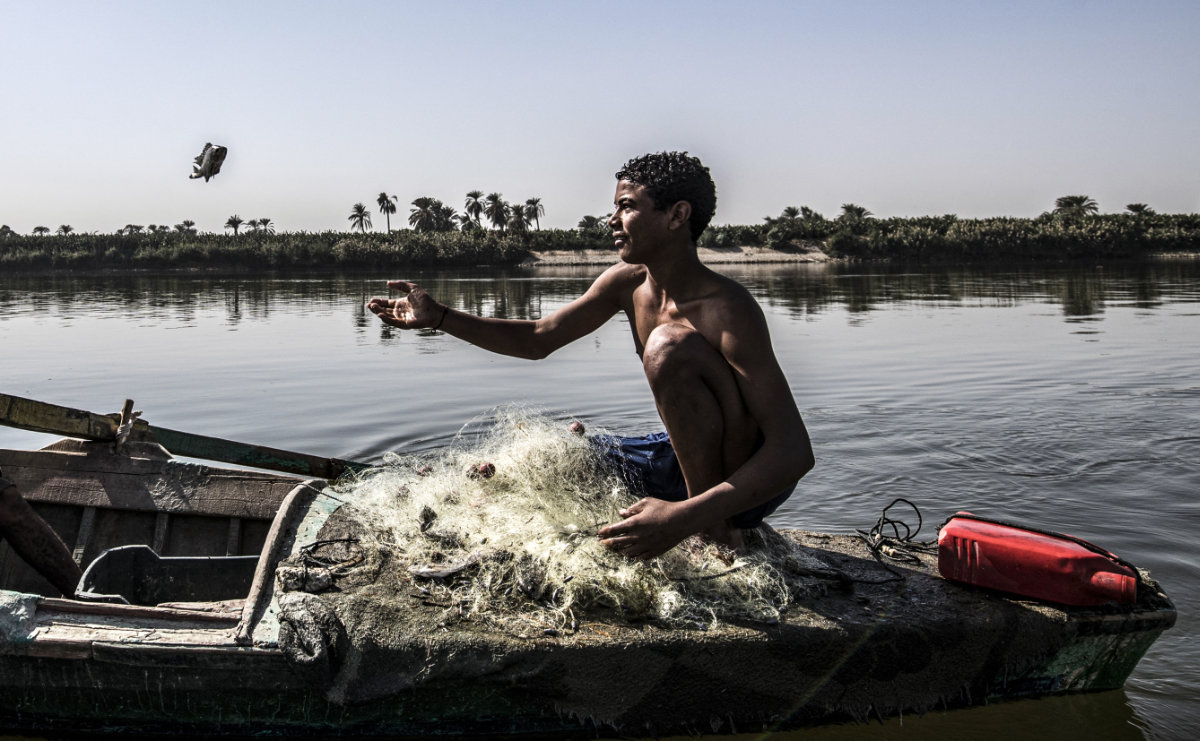
“This helps people to understand long-term trends in what is happening with fisheries through time,” said Kim Friedman, a senior fishery resources officer at FAO. “The initial push was mainly to do species identification guides and most of these were done with the museums of the world, so that a country could pick up a guide and know exactly which species it was. But then we started to also do posters and pocket guides so people could carry them in boats.”
The tools have evolved thanks to critical new work, supported by artificial intelligence, that could transform ocean-conservation efforts that are much needed given that many of the world’s fish species are in decline.
Once a very costly, time-consuming process carried out by observers on vessels, species tracking using advanced technology can now be so detailed that the data can even pinpoint the freshness of fish.

Edwin van Helmond, a fisheries scientist at Wageningen Marine Research, which is part of WUR, said that the potential for the use of AI and other technologies in supporting fisheries management is huge.
“The fact that detailed catch information can be collected through algorithms, without the presence of experts, makes data collection available in remote areas,” he told Arab News. “Data can be sent or collected at a later stage or directly stored in a data cloud and made remotely available for experts.”
He believes such technology will also greatly benefit food security in the long term, which is a major challenge facing the Gulf region, and also the sustainable management of natural resources, which begins with the collection of sufficient data.
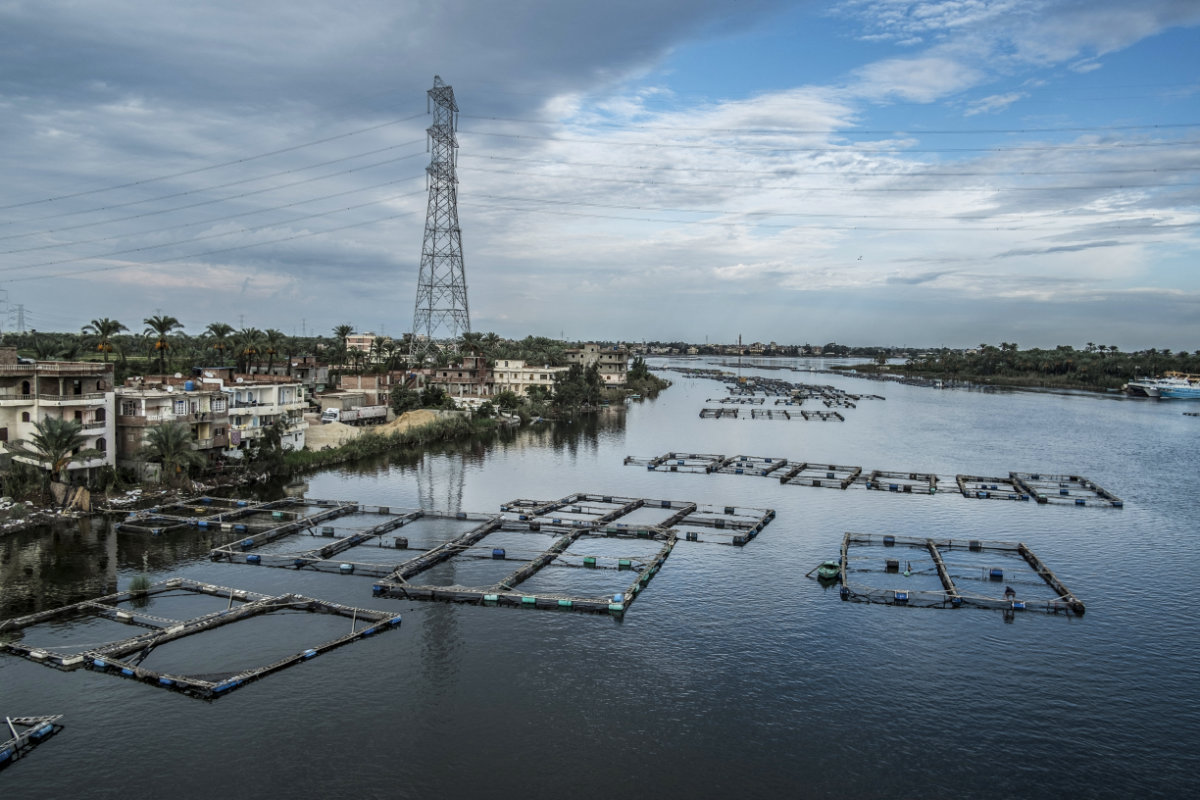
“To be able to perform a good assessment of the available resources, in this case local fish stocks, you need good data,” he said. “This includes detailed catch information by species, catch weight, and length frequencies.
“These variables form the input for any stock-assessment model, and with these models you can calculate sustainable harvest quantities without the danger of over exploitation, which equates to sustainable management of local fish stocks and long-term food security.”
FAO is now trying to make the technology more accessible so that more people in the industry can benefit from it, which in turn will help the organization expand its data sets. Comprehensive information about each species would be used to build algorithms that can identify species and their locations and recognize any changes.
FASTFACTS
Climate change, diminishing fish stocks and over-fishing are threatening coastal communities.
AI and mobile apps are helping fishermen worldwide engage in sustainable fishing practices.
Once such algorithms are developed, an app will allow users to search for specific species using imagery that can unlock information such as the features of the species, food values and other fisheries-related data.
“In the future, anyone, even a fisherman, could take pictures of his catch, send them off, get the species identification and, potentially, also some metrics like the size of the fish,” eventually developing a portfolio of trends in the waters in which they work, Helmond said.
The project in the Nile Basin, which will run for three to five years, will also look at certain country requirements in terms of languages, reporting and ensuring data sets meet the desired levels of security.
So far, e. The system mirrors recreational fishing identification efforts in European rivers and lakes, where communities fund systems that can identify catches and develop appropriate codes of practice among themselves.
“This then feeds back into understanding how well the different rivers or lake systems are doing and which ones maybe need to be augmented with hatchery-reared fish,” Friedman said.
“It allows people to link up with others who would not have potentially linked up in the past.”
A key to success will be data gathering by as many stakeholders as possible, said Friedman. The resultant benefits for all those involved will be the best possible algorithms.
“There is also an ability for us to start to collect pictures from around the Nile to tell people they can catch this type of fish in good sizes and condition in a specific location,” he added. “So (this addresses) issues about sustainability and also looking for market opportunities.”
The Global Fishing Watch platform, a collaboration between Google, nonprofit environmental digital-mapping organization SkyTruth and conservation organization Oceana, was one of the first attempts to combine AI with satellite data to observe fishing activity.
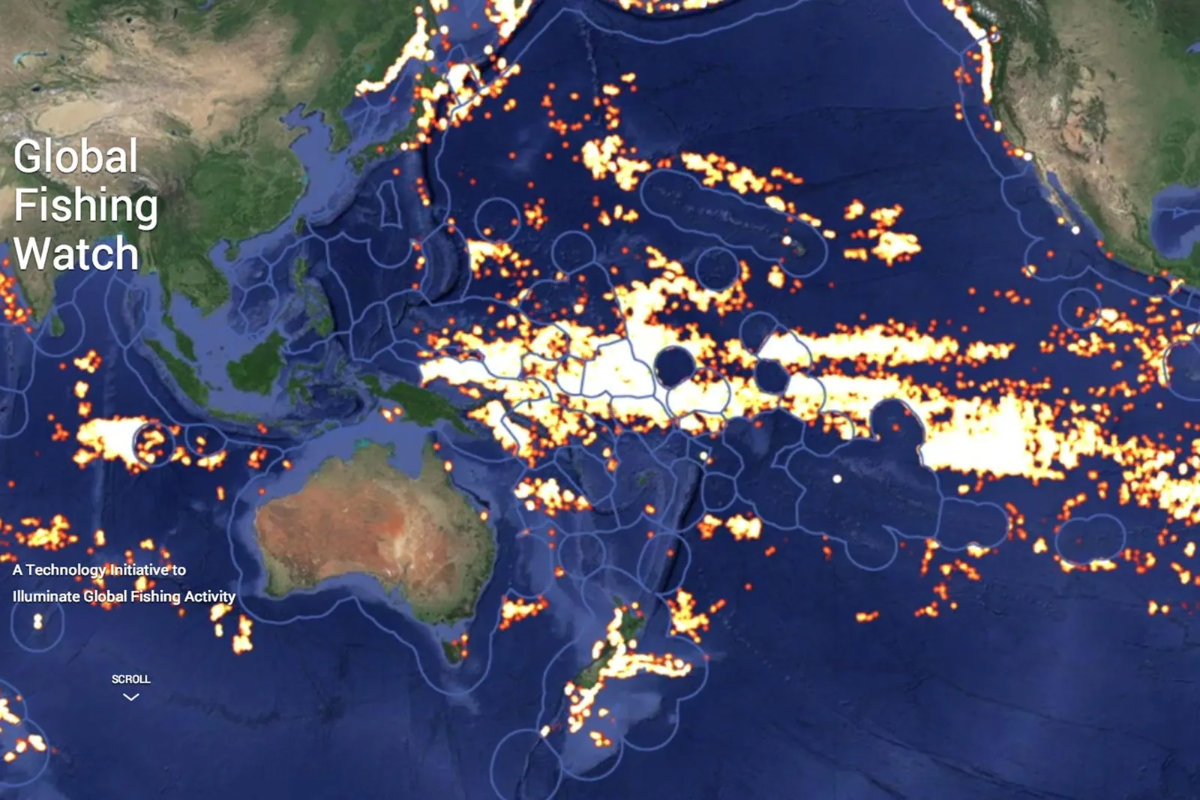
The technology also offers hope for efforts to address diminishing freshwater resources across the region, which has some of the lowest levels of fresh water in the world, mainly in the form of underground, non-renewable stocks. Freshwater reserves have fallen by 60 percent in the past four decades, according to FAO, and what remains is expected to diminish by 50 percent by 2050.
Advances in technology are expected to play a leading role in the creation of international policies to promote sustainable fisheries and aquaculture and ensure their growth, with artificial intelligence helping to address what is now a global environmental concern. The data that is gathered will allow fish and seafood retailers and customers to be more aware of whether what they are selling and consuming is sustainable.
Innovation also holds the key to making farming and the entire agri-food value chain more attractive, creating business and employment opportunities and helping the region to achieve food security, sustainable agriculture and the objectives of the UN’s Sustainable Development Goals.
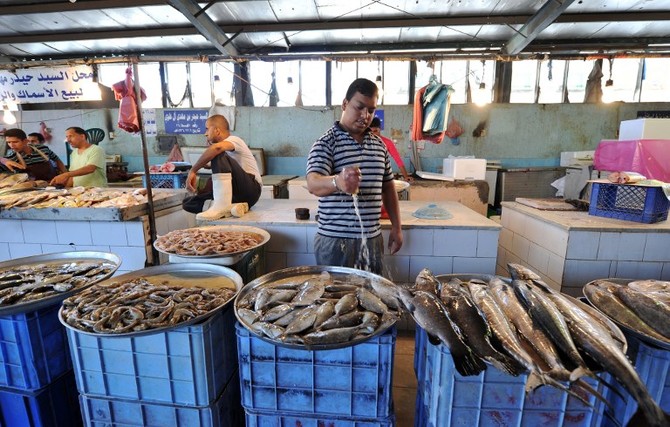
FAO Director-General Qu Dongyu believes the latest collaborative project is a vital step toward achieving this.
“A focused and strengthened framework between FAO and Wageningen University and Research will allow our partnership to better align efforts and resources for greater impact in meeting the 2030 Agenda for Sustainable Development Goals,” he said.
In addition to the Nile project, FAO and WUR are collaborating on several other initiatives related to the sustainable development of fisheries and aquaculture value chains.
In the African, Caribbean and Pacific States, for example, a joint project called FISH4ACP is providing expertise on multi-stakeholder partnerships that is contributing to food security and increased nutrition, prosperity and job creation.
Just last month, authorities in Saudi Arabia, which is responsible for 49 percent of the Gulf’s aquaculture, announced they are working to establish a regional center for fisheries as part of wider goals to diversify the national economy and address food security.
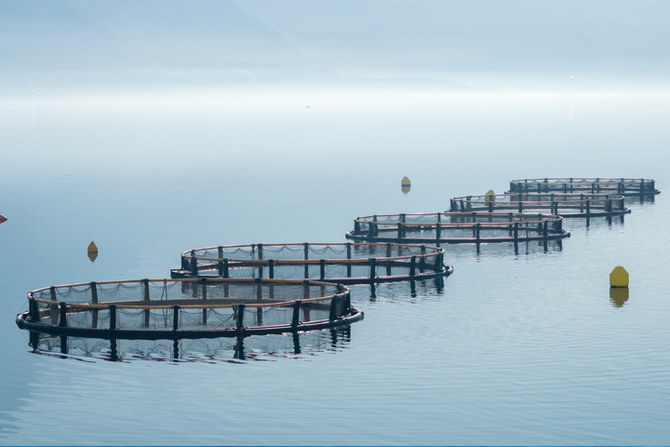
Friedman said that such initiatives have the potential to rapidly spread across the region and beyond.
“If we look back through time, all the regional guides that were put together to understand fisheries started off in certain regions and now are global,” he said.
“I suspect we will have the same thing happen not just for the Nile, but for inshore fisheries, pelagic (open sea) fisheries and so on, based on the opportunities that AI will offer us.”
Source: Arab News (https://www.arabnews.com/node/2060676/middle-east)
Regional leader in design-build construction, AMANA has completed building the 14,000-sq m Al-Futtaim Auto Park in Al Ain, including the installation of a solar photovoltaic (PV) system. The solar PV system is expected to generate 800 MWh of energy, which is equivalent to 5,571 trees grown over 10 years. AMANA’s strong and diversified portfolio of capabilities, beyond standard industrial contracting, enabled a seamless and successful installation, even as construction of the building was ongoing.
Jihad Bsaibes, CEO, AMANA Contracting Group, said: “The Al-Futtaim Auto Park in Al Ain has become a signifier of a greener, smarter future for the nation. Building it with a solar PV system, we combined significant energy production with seamless architectural integration. Thus the project opens up new prospects for the deployment of renewable energy. Solar photovoltaic systems are a critical solution to help decarbonise the construction sector, responsible for more than one third of global annual greenhouse gas emissions.”
AMANA built the state-of-the-art Auto Park in Al Ain – a complete showroom and workshop for servicing motor vehicles, powered by renewable energy. Its 487.9 kWp solar PV plan is expected to generate 800 MWh of energy, whilst offsetting 334 metric tons of carbon dioxide during its first year of operation. The project is the first automotive facility to operate all brands under one roof, as well as being the only multistory automotive facility in Al Ain which can hold almost 70 new and used cars on both floors. Its end-to-end offering includes commercial vehicles, in addition to passenger cars, new and used, for sale, leasing, and renting.
The UAE has ramped up nationwide efforts to increase its renewable energy capacity. The UAE’s Energy Strategy 2050 aims to increase the percentage of clean energy in the country’s energy mix to 50 per cent. The country is diversifying its energy mix, adding solar and nuclear sources to its grid, as it looks to free up crude for export. Abu Dhabi intends to generate half of its power requirements from clean energy sources by 2050.
With almost 500,000 square meters of industrial buildings and associated rooftops constructed yearly, AMANA Contracting and Steel Buildings is a pioneer in building rooftop solar power plants. AMANA was one of the first contractors approved by DEWA (Dubai Electricity and Water Authority) to provide installation and maintenance services for solar energy systems in early 2015. This classification coupled with AMANA personnel certified by DEWA as “solar PV expert” makes AMANA the go-to contractor of choice for designing, installing and maintaining roof-mounted solar power plants.
Source: CNBME
Sixty-metre machine recycles up to 2,000 tonnes of rubble a day
A few years ago, the Ghayati area was a remote patch of sand in the Abu Dhabi desert.
But now, 2,000 tonnes of construction waste are recycled every day into material that builds the country's roads.
It all happens in the Ghayathi desert – about 250 kilometres west of the capital – where a 60-metre crusher turns huge stones into gravel.
All stone from construction sites and demolished buildings in Al Dhafra is recycled, reused and sold to boost the economy. Previously the waste was taken to landfill.
The crusher opened in 2018, then closed for a few years but reopened in January and expects to process hundreds of thousands of tonnes of waste this year.
“Now we can sell it and use it for infrastructure projects such as road construction,” said Khalid Al Khanbashi, senior waste officer at Tadweer.
“This boosts the economy by providing reusable material rather than collecting it from natural resources," he said.
“It also opens the door for investments in the waste-management field."
Al Dhafra is a region on the rise. Sir Bani Yas Island is one of the country's top tourist destinations. Ruwais, once a small oil town, is being transformed with new parks, shops, markets and beach developments, while the first operational line of Etihad Rail runs from the Shah and Habshan gas fields to Ruwais.
The crusher receives its waste chiefly from projects in these areas – and the work is painstaking and methodological. The area is piled with massive loads of waste. A tractor first takes a load to the examination station. The material is inspected and checked by camera to ensure it is suitable for crushing.
It is then cleaned before being fed into the crushing plant. The waste travels on a magnetic conveyer belt where any metals or contaminated materials are removed.
Source: The National News
A massive move to sustainability is driving the UAE's industrial sector focus, says chief executive of Dubal Holding, which owns 50 per cent of EGA
Emirates Global Aluminium (EGA), the UAE’s biggest industrial company outside the oil and gas sector, will soon make a complete shift to nuclear and solar energy to produce aluminium, as demand soars globally for sustainably developed raw materials.
Last year, EGA became the first company to produce aluminium commercially using solar power. It currently produces approximately 40,000 tonnes of the green aluminium, called CelestiAL, which is being supplied to car maker BMW.
The entity is currently in the process of connecting to the Barakah nuclear power plant, said Ahmad bin Fahad, chief executive of Dubal Holding, which owns 50 per cent of EGA.
"It's a work in process, to do the connection [to the nuclear plant], and ensure the conversion from conventional gas power engines into nuclear power. It's an infrastructure project with a big cost involvement. There are a lot of things that need to be done in order to do the connection [since it also needs to link] to the two smelters in Jebel Ali and Al Taweelah," he told The National.
While he did not disclose the exact timeline or other details, Mr bin Fahad confirmed the plan is to switch completely to nuclear and solar within the next few years.
Aluminium production is energy intensive and generating electricity accounts for about 60 per cent of the global aluminium industry’s greenhouse gas emissions. Globally, roughly 55 per cent of the power consumed by the industry is self-generated rather than purchased from the grid, according to the International Energy Agency (IEA).
Considering the average power mix supplying the global aluminium industry, hydropower accounts for about 25 per cent, down from 40 per cent in 2010, "largely due to expanding aluminium production in China powered by coal-based electricity, where coal supplies close to 90 per cent of production", IEA said in a report in November.
In Europe, North America and South America, hydro still supplies 75 per cent or more of production.
Using nuclear energy will slash carbon emissions by about 50 per cent, from roughly 8 tonnes of emissions to produce one tonne of aluminium at present, Mr bin Fahad said.
EGA, which produces about 2.7 million tonnes of aluminium every year and ships its products to more than 50 countries, is also developing its own technology to decarbonise operations and reduce emissions.
"We are increasing production ... the demand [especially for green aluminium] far supercedes the supply," he said.
Overall global aluminium demand is expected to increase almost 40 per cent to 119.5 million tonnes in 2030, driven by key industrial sectors such as transportation, construction, packaging and electrical sectors, according to a study by CRU International on behalf of the International Aluminium Institute (IAI).
The aluminium sector will need to produce an additional 33.3 million tonnes to meet demand growth, the report said. Two-thirds of the demand growth is expected to come from China, followed by the rest of Asia, North America and Europe.
Meanwhile, aluminium prices have been soaring as the fallout from the Russia-Ukraine war weighed on global supply. Prices averaged $3,498 per metric tonne in March, up almost 8 per cent from February’s price and nearly 60 per cent on an annual basis, FocusEconomics said in a report this week.
Western sanctions, including Australia’s ban of alumina and aluminium ores exports to Russia, is "likely driving a decline in Russian aluminium supply to the rest of the world", it said.
"This, coupled with short-covering by traders in the LME [London Metal Exchange] and fears of further sanctions — potentially including those on Russia’s Rusal, one of the world’s main producers — sent prices soaring to record highs in March," the report said.
The LME might go even higher driven by the conflict, the lingering effects of the pandemic and the soaring prices of raw materials, fuel and logistics, according to Mr bin Fahad.
If prices continue to rise, they might "reach an inflationary rate that will be so expensive, that it will impact the rest of the industry that rely relies on aluminium ... like the auto industry", he said. And with sectors such as the auto industry shifting the costs to customers, "the end-user will be penalised", he said.
He stressed that it is, however, a short-term issue. "Things will be corrected. EGA will keep expanding the production line to keep up with the demand but this is just one player. Other players also need to look into their operations and optimise efficiency and production."
Prices are expected to fall from their current highs by year-end, the Focus Economics report said, although supply tightness and lingering fears of further disruptions ahead should keep them elevated. Aluminium prices are anticipated to average $3,087 per metric tonne in the fourth quarter of this year and drop to $2,746 per metric tonne by the fourth quarter of 2023.
EGA, which is also owned 50 per cent by the Mubadala Investment Company, currently forms the biggest part of Dubal Holding's portfolio. The company, the investment arm of Dubai government in the commodities and mining, power and energy, and industrial sectors, is also looking for opportunities to expand the midstream and downstream aluminium industry, such as auto-spare parts, according to Mr bin Fahad.
It is also proceeding on track with its Dh4 billion ($1bn) waste-to-energy project, which will convert 1.9 million tonnes of waste per year into renewable energy. The approximate 200 megawatts of electricity generated will be fed into the local grid as clean energy.
The facility is expected to start operations by 2024, and more such plants are planned for the rest of the country, Mr bin Fahad said.
Dubal Holding's project pipeline includes plans for a plastics-to-chemicals-and-fuel facility as well as new ventures in biogas and titanium.
The company announced a record profit of Dh2.7bn for 2021 compared with Dh217 million in 2020, driven by EGA's strong performance. "I hope it [financial results this year] will be better than last year," Mr bin Fahad said.
Source: The National News


